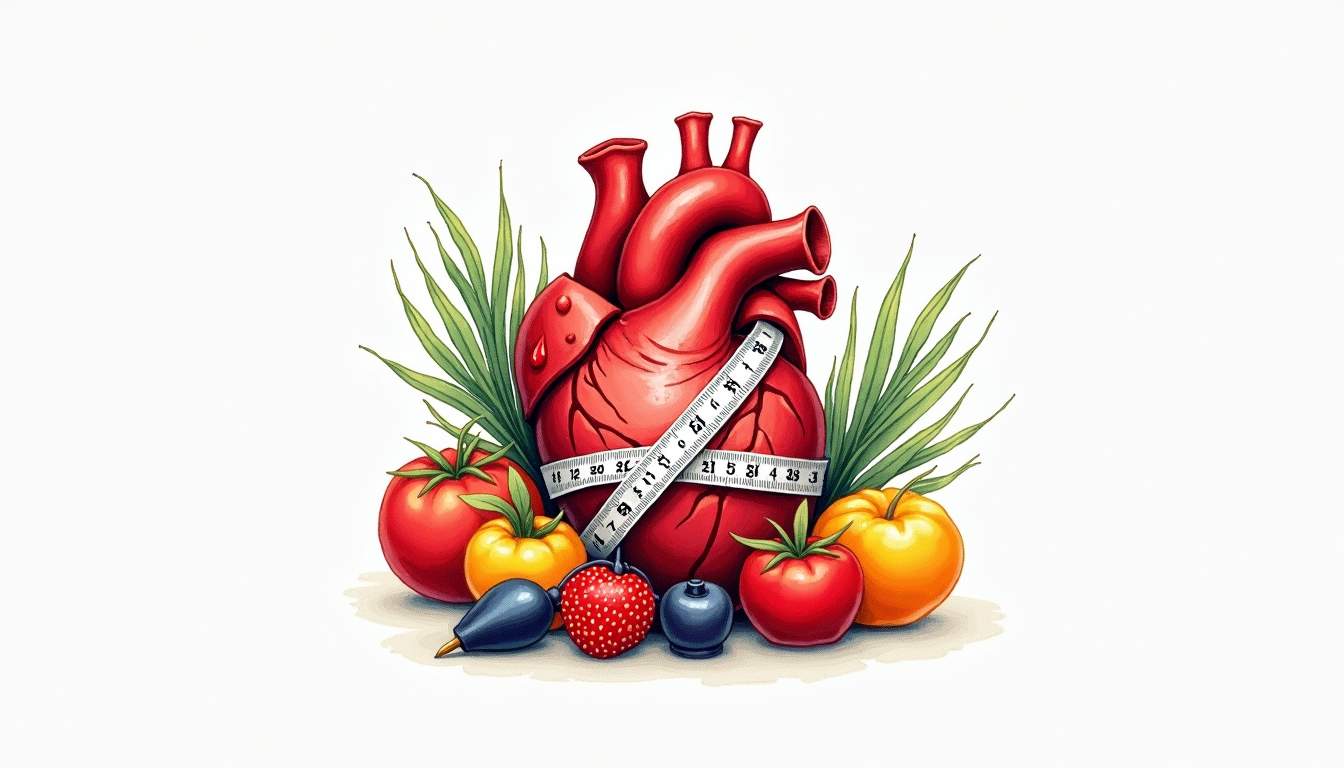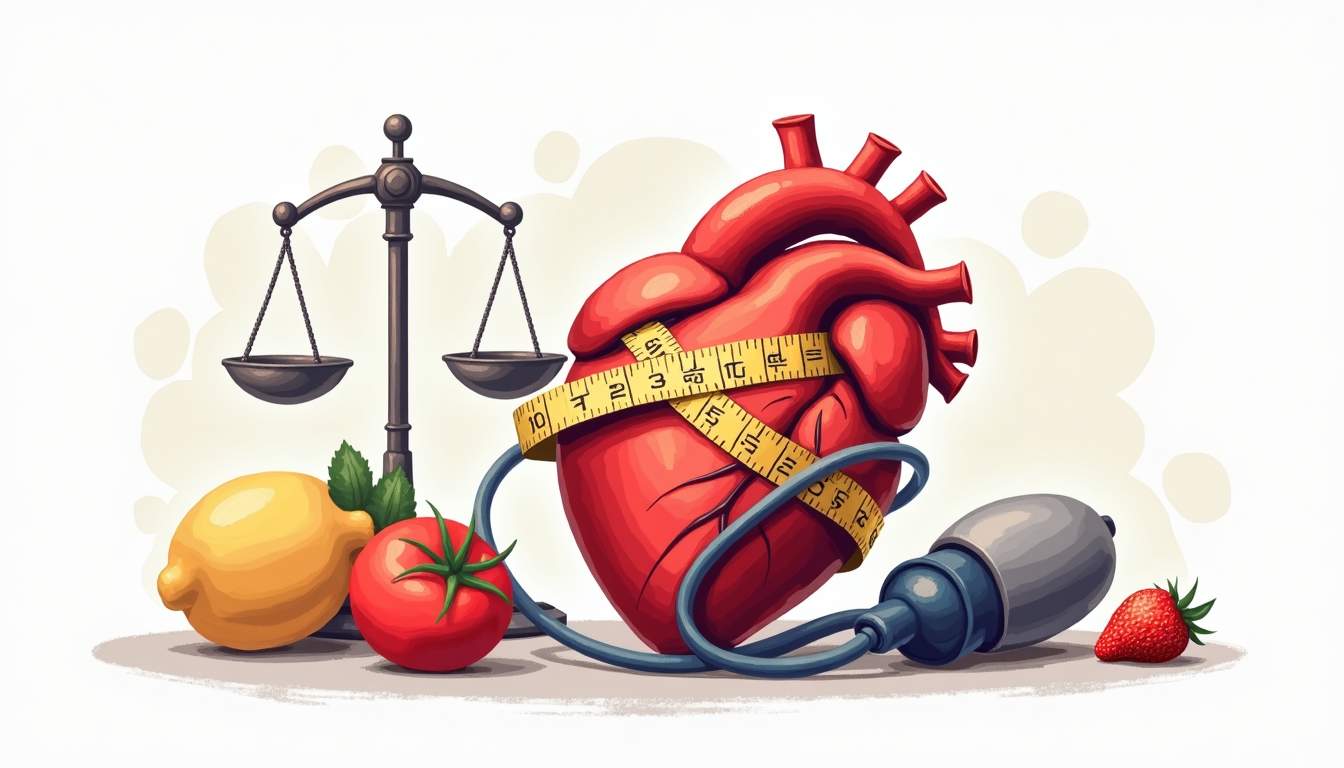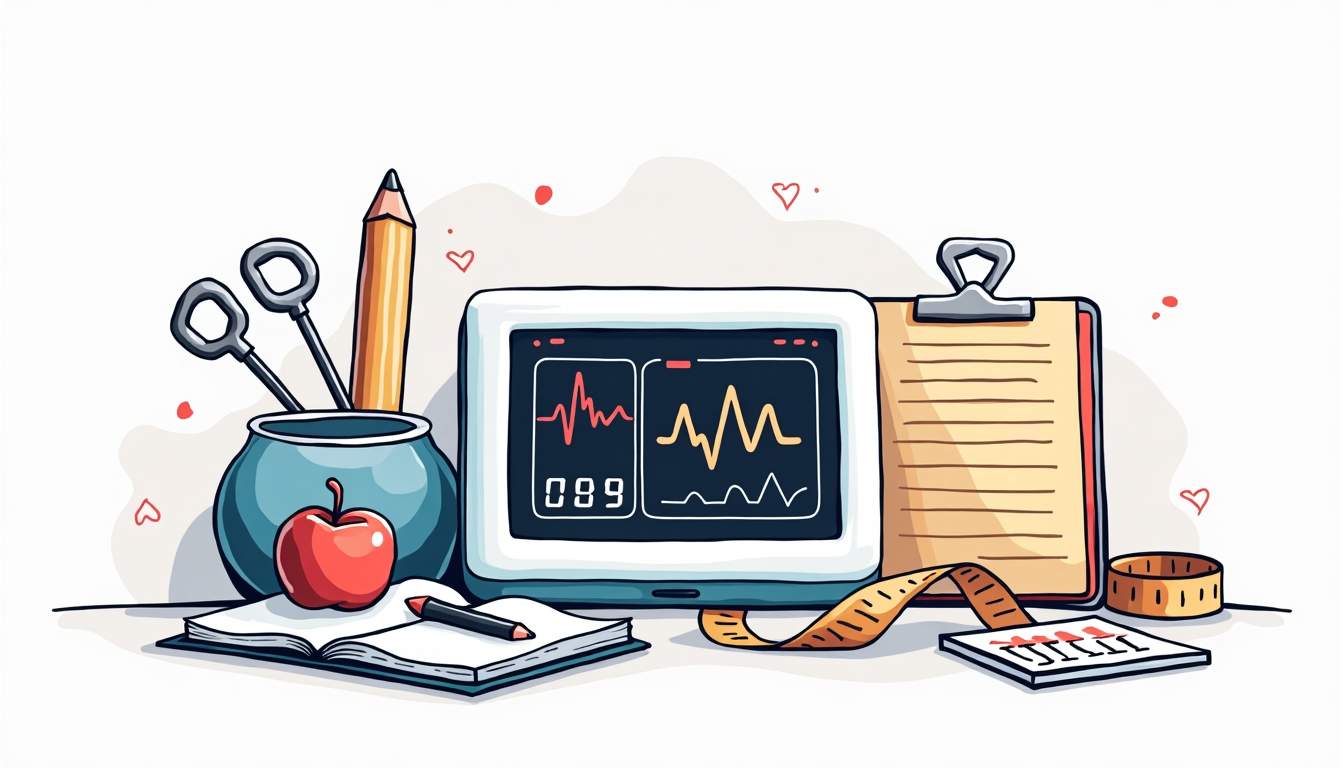
When the numbers on your blood pressure monitor creep higher or the scale nudges upward, it can feel like an uphill battle. But managing blood pressure and weight isn’t about sudden, drastic changes-it’s about steady, manageable steps that fit into your life. Finding the right partner in this journey can make all the difference, whether it’s a tool, a routine, or a mindset.
Understanding the Connection Between Blood Pressure and Weight
Blood pressure and weight are closely linked, often influencing each other in ways that aren’t always obvious. Excess weight puts extra strain on your heart and blood vessels, making it harder for your body to maintain a healthy blood pressure. Even a modest weight loss can have a significant impact on lowering blood pressure and reducing the risk of heart disease.

But it’s not just about the numbers on the scale. The quality of your weight—how much is muscle versus fat—also matters. Muscle helps your body burn calories more efficiently and supports overall cardiovascular health. Focusing on healthy habits rather than just weight loss can lead to better, more sustainable results.
Why Blood Pressure Matters
High blood pressure, or hypertension, often shows no symptoms but quietly damages arteries and organs over time. It increases the risk of heart attacks, strokes, kidney problems, and even cognitive decline. Keeping your blood pressure in check is crucial for long-term health, and managing weight is one of the most effective ways to do that.
Moreover, understanding your blood pressure readings is essential. Blood pressure is measured in millimeters of mercury (mmHg) and is expressed as two numbers: systolic (the pressure in your arteries when your heart beats) over diastolic (the pressure in your arteries when your heart rests between beats). A reading of 120/80 mmHg is considered normal, while readings above this can indicate varying levels of hypertension. Regular monitoring can help you and your healthcare provider make informed decisions about lifestyle changes or medical interventions that may be necessary.
The Role of Lifestyle Choices
Diet, physical activity, stress levels, and sleep quality all play critical roles in managing both blood pressure and weight. Small changes in these areas can add up to big improvements. For example, reducing sodium intake, increasing potassium-rich foods, and engaging in regular exercise can lower blood pressure. Similarly, balanced nutrition and consistent movement help control weight.
In addition to these factors, the impact of stress on both blood pressure and weight cannot be overlooked. Chronic stress can lead to unhealthy eating habits and physical inactivity, which can exacerbate weight gain and elevate blood pressure. Incorporating stress-reduction techniques such as mindfulness, yoga, or deep-breathing exercises can be beneficial. Furthermore, ensuring you get adequate sleep is vital, as poor sleep quality has been linked to weight gain and increased blood pressure. For convenient at-home tracking, consider using the Bluetooth Blood Pressure Monitor from Aspedan. Prioritizing these lifestyle choices creates a holistic approach to health that can yield significant benefits over time.
Building a Sustainable Routine That Works for You
There’s no one-size-fits-all approach to managing blood pressure and weight. What works for one person might not work for another. The key is to build a routine that fits your lifestyle, preferences, and goals.
Start with Realistic Goals
Setting achievable goals keeps motivation high and reduces the risk of burnout. Instead of aiming for drastic weight loss or perfect blood pressure numbers overnight, focus on incremental improvements. For example, aim to lose 5-10% of your body weight over several months or gradually reduce your sodium intake.
Tracking progress can be encouraging. Whether it’s logging your meals, noting your exercise sessions, or regularly checking your blood pressure, having data helps you see what’s working and where adjustments are needed.
Incorporate Physical Activity You Enjoy
Exercise doesn’t have to mean hours at the gym. Walking, dancing, swimming, gardening, or even playing with your kids can count as physical activity. The goal is to move consistently and find joy in it.
Regular physical activity strengthens your heart, improves circulation, and helps maintain a healthy weight. Aim for at least 150 minutes of moderate-intensity exercise per week, but remember that any movement is better than none.
Focus on Balanced Nutrition
Eating well doesn’t mean strict dieting or deprivation. It means nourishing your body with a variety of foods that support heart health and weight management. Emphasize whole grains, lean proteins, fruits, vegetables, and healthy fats.
Reducing processed foods and added sugars can make a big difference. Also, be mindful of portion sizes and try to eat meals at regular intervals to keep your metabolism steady.
Monitoring Progress: Tools and Techniques
Keeping an eye on your blood pressure and weight helps you stay on track and catch any concerning changes early. Fortunately, technology and simple habits make this easier than ever.

Home Blood Pressure Monitors
Using a reliable home blood pressure monitor allows you to check your numbers regularly without frequent doctor visits. It’s important to follow the instructions carefully-sit quietly for a few minutes before measuring, keep your arm at heart level, and take multiple readings for accuracy.
Regular monitoring can reveal patterns, such as higher readings in the morning or after certain activities, helping you and your healthcare provider tailor your management plan.
Weight Tracking Methods
Stepping on the scale regularly can be helpful, but it’s just one piece of the puzzle. Consider also measuring waist circumference or noticing how your clothes fit. These indicators often reflect changes in body composition better than weight alone.
Apps and journals can assist in tracking your weight, diet, and exercise. Seeing your progress over time can boost motivation and highlight areas needing attention.
Partnering with Healthcare Providers
Regular check-ins with your doctor or a registered dietitian provide valuable guidance and support. They can help interpret your readings, adjust medications if needed, and suggest personalized lifestyle changes.
Don’t hesitate to ask questions or share challenges. Managing blood pressure and weight is a team effort, and your healthcare providers are there to help you succeed.
Addressing Challenges and Staying Motivated
It’s normal to face obstacles along the way. Plateaus, busy schedules, stress, and occasional setbacks can test your commitment. Recognizing these challenges and having strategies to overcome them is essential.
Dealing with Plateaus
Weight loss and blood pressure improvements often slow down after initial progress. This doesn’t mean failure. It’s a sign to reassess your routine, perhaps by varying your exercise, adjusting your diet, or consulting your healthcare provider.
Patience is key. Sustainable changes take time, and consistency matters more than perfection.
Managing Stress
Stress can raise blood pressure and trigger unhealthy eating habits. Incorporating stress-reduction techniques like deep breathing, meditation, yoga, or simply spending time outdoors can improve both your mental and physical health.
Finding what relaxes you and making it a regular part of your routine can help keep stress in check.
Building a Support System
Having friends, family, or support groups who understand your goals can make a big difference. Sharing successes and struggles creates accountability and encouragement.
Sometimes, partnering with a workout buddy or joining a community focused on healthy living provides the extra push needed to stay on track.
Embracing Technology as Your Ally
Technology offers a variety of tools designed to assist in managing blood pressure and weight effectively. From wearable devices to smartphone apps, these resources can provide insights, reminders, and motivation.

Wearable Fitness Trackers
Devices that monitor steps, heart rate, and sleep patterns give you real-time feedback on your activity levels and overall health. Setting daily goals and tracking progress can encourage more movement and better sleep habits.
Some trackers even sync with blood pressure monitors or health apps, creating a comprehensive picture of your wellness.
Nutrition and Exercise Apps
Apps that help log meals, count calories, or suggest workouts can simplify healthy living. Many offer personalized plans based on your preferences and goals, making it easier to stick with your routine.
Look for apps that emphasize balanced nutrition and sustainable habits rather than quick fixes.
Remote Health Monitoring
Some healthcare providers offer remote monitoring services, where your blood pressure readings and other health data are shared electronically. This allows for timely adjustments to your care plan and keeps you connected with your medical team.
Remote monitoring can be especially helpful for those with mobility issues or busy schedules.
Long-Term Benefits of Managing Blood Pressure and Weight
Taking control of your blood pressure and weight isn’t just about immediate improvements-it’s an investment in your future health and quality of life.
Lower blood pressure reduces the risk of heart attacks, strokes, and kidney disease. Maintaining a healthy weight decreases the likelihood of diabetes, joint problems, and certain cancers. Together, these factors contribute to greater energy, better sleep, and improved mental well-being.
Embracing this journey with patience and persistence leads to lasting changes that support a vibrant, active life.
Improved Cardiovascular Health
Consistently managing blood pressure and weight strengthens your heart and blood vessels. This reduces the workload on your cardiovascular system and helps prevent complications.
Enhanced Mobility and Energy
Carrying less excess weight and engaging in regular physical activity improve muscle strength and endurance. This makes daily tasks easier and enhances overall vitality.
Better Mental Health
Physical health and mental well-being are deeply connected. Healthy habits can reduce anxiety and depression, boost mood, and improve cognitive function.
Final Thoughts
Managing blood pressure and weight is a journey that benefits from a trusted partner-whether that’s a supportive healthcare team, reliable technology, or a personalized routine. The focus should be on steady progress, sustainable habits, and celebrating small victories.
By understanding the connection between blood pressure and weight, building a routine that fits your life, monitoring your progress, and addressing challenges head-on, you can take charge of your health. The path isn’t always easy, but with the right support and mindset, it’s absolutely achievable.


